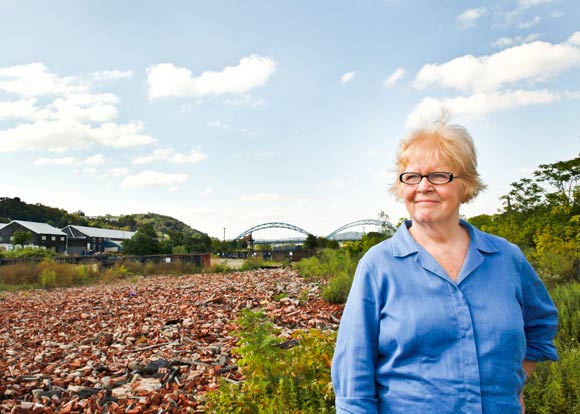
RCI receives $3.4 million in EPA Community-wide Brownfield Assessment Grants.
The EPA estimates 450,000 brownfields--abandoned gas stations, derelict mines, shuttered factories--litter the country. Contamination at such sites from trash, oil, or industrial activity won't make the Superfund list but does deter redevelopment and lowers property values even in otherwise desirable locations.
Pennsylvania has invested over $518 million to help 1,200 sites and retain over 87,000 jobs. The PA Department of Environmental Protection is collaborating with the Team PA Foundation to inventory brownfields and their characteristics to facilitate companies' finding sites that suit their needs. Nationally, EPA's brownfields program since its inception in 1995 has disbursed almost $900 million to reclaim 25,000 acres and assess another 16,000 sites.
Some brownfields, such as the former Bethlehem Steel mill, can stretch for miles. Others may cover only the corner of a block. By focusing on smaller sites in western Pennsylvania, the non-profit North Side Industrial Development Company strives to maximize its impact.
Assessment is Critical
According to its executive director Emily Buka, NSIDC has received $3.4 million in EPA community-wide brownfield assessment grants. (NSIDC does business under the name the Riverside Center for Innovation.) The latest $1 million came in June, when NSIDC led a coalition of 20 municipalities along the Ohio and Allegheny Rivers to get funding to assess 52 acres of the former Pittsburgh & Lake Erie Railroad maintenance facility in McKees Rocks. The DEP, working with the Department of Community and Economic Development, also awarded money to redevelop the site, which is expected eventually to bring in $13 million in tax revenue.
Kevin Sunday, a spokesman for DEP, says that revenue is especially important where the per capita income is only about $13,000. "In this case, you're looking at a site that has a direct skyline view of Pittsburgh. Most former industrial centers are near urban areas and have the potential to revitalize a community. The brownfields program is a winning proposition both economically and environmentally."
Even if relatively small, the P&LE site is the largest NSIDC has tackled. Its previous work included a half-acre gas station and 6-acre Henry Miller spring plant. Those sites, however, taught Buka that "the combination of riverfront properties, multiple municipalities, and economic development combined with brownfield redevelopment appealed to the EPA, so we took that model and recreated it. Ironically," Buka adds, "the perception is that the riverfronts in Pittsburgh, PA, must be contaminated. There are some problems, but none of them are Love Canals." Contamination at most sites can be cleaned or controlled relatively easily, improving NSIDC's bang for the buck.
Read more of Emily’s interview: http://www.keystoneedge.com/features/pennsylvaniabrownfields0901.aspx



0 comments:
Post a Comment